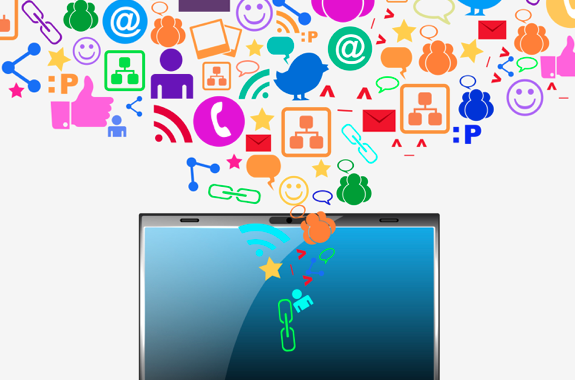IoT, or “Internet of Things”, is what we have when everything around us starts being connecting to the Internet.
At first, we only connected computers to networks. Then we started connecting peripherals like printers directly to networks as well. The Internet was the big leap where we started connecting networks together into one big network.
Before long we started connecting more and more devices to the Internet. Our phones. Our TVs. But this is really just the beginning.
Imagine everything around you being connected to the Internet.
But what does that even mean? What we are really talking about is having lots of sensors that collect data, and ways to aggregate the data and automate useful decisions.
Sensors and networks used to be expensive, so large networks of sensors needed to be publicly funded. Sensors for weather or disasters like earthquakes and tsunami would be good examples.
Now sensors and networking are both very cheap, so we can put networked sensors in almost anything.
We can put them in our packing and our refrigerator can tell us on our phones what we are running out of and what we need to buy.
We can put it them cement and have buildings or bridges tell us when they have damage or need maintenance.
We can put them roads and street signals. This would let us measure traffic and control the signals to optimise traffic flow.
The possibilities are endless, but the patterns are quite similar. Let’s see how it all fits together with some of the other recent buzz words.
1. We have lots of small sensors that collect data and pass it on to the network. (This is IoT. Some of these sensors are in our clothes or in devices that we wear. These are called Wearables)
2. We collect lots of data and bring it together in one place (We call this the Cloud).
3. We take these large sets of data and do analysis (This is called big data)
4. We find ways to show the results so that it make sense to us and is easy to understand (This is called descriptive analytics and visualisation)
5. We get computers to act on the data automatically (We call this AI or Artificial Intelligence)
Digital Signage can play an important part in visualisation by showing us what is going on with the data.
Imagine a summer where there is not enough rain and the town asks everyone to use less water. With smart meters we could show a heat map of the town where different colors showed the average water usage by area.
People would quickly recognise if they were in the area using less and more than average. A simple graphic like this can be a powerful motivator to encourage people to participate.
We can also use sensors to make decisions about what to content to play. We could show different content depending on what the weather is like outside or based on the average age of people nearby.
We are seeing some of this now on dedicated signage appliances, for example vending machines in Tokyo.
But we won’t see this become common until more of digital signage is networked and controlled by intelligent rule based engines in next generation signage such as Otegaru net.
